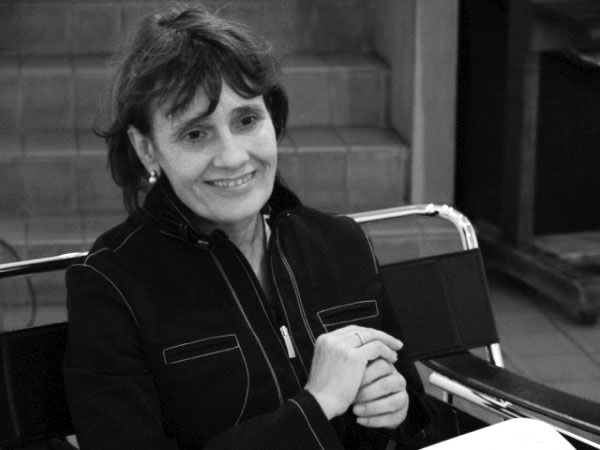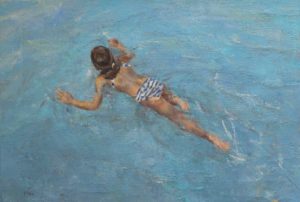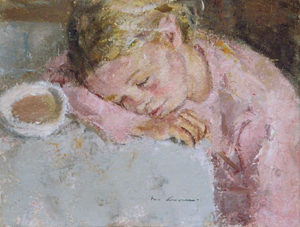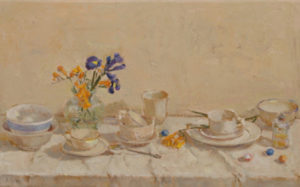BARCELONA, 1955 Alícia Grau

His impressionist painting and his work are formed with meticulous construction based on successive layers of color.
The children’s theme is one of its strengths, which together with still lifes and urban scenes highlight its sensitivity to small details.
BIOGRAPHY
Alicia Grau began her artistic training by attending the School of Arts and Crafts at an early age. Once graduated, she began her professional career. Since then he has managed to create an artistic movement among the artists of his generation and his work is spread all over the world.
His style has been defined by art critics as unmistakable by his drawing technique, his measured use of pigments, which gives compact strength to the textures of his canvases. His impressionist painting, and his work are formed with meticulous construction based on successive layers of color. It also has the innate ability to capture human spontaneity through its portraits. The children’s theme is one of its strengths, which along with still lifes and urban scenes highlight its sensitivity to small details.
For more than twenty years, he has made a large number of personal exhibitions in most European and US capitals. His art has been recognized with numerous awards and international recognition, forming his work part of collections of private and public arts today. , he divides his working time between his hometown and Florence in Italy.
CHILDISH SPONTANEITY IN ALICIA GRAU’S PAINTING
by Josep M. Cadena
Alícia Grau (Barcelona, 1955) has de difficult facility to pictorially capture human spontaneity. She has chosen the children world, where boys and girls use to express newly born feelings, those which are new to them, and that amaze them as they live through them. And she always tries to highlight their more positive sentiments, those leading to exalt the virtues of these personalities that are being shaped and that, surrounded by social evils that never cease to poke, grow stronger by practicing good manners.
Although she also practices with urban landscape and still life, subjects where she shows her emotional response in the intimate details of atmospheric situations, the infantile figure is what Alícia Grau likes best. As I have been able to share with her several talks where she conveys her enthusiasm for the truth in all human actions, I personally think that painting little boys and girls in their most natural mode or waiting as long as needed, so they become self-assured and liberate their most spontaneous actions, allows her to connect with her enduring wish to motivate them to truly do what we adults do.
Because she knows that the everyday things which we all have to face, become complicated and even cruel for those who, as the saying goes, move around with their heart on their sleeves. But she tries to compensate it by painting the stronghold, each time smaller and even unprotected, of the original innocence; that of the positive notions; those that can help us to keep on improving for a longer time.
There is an extensive literature on children rogues, little beach scoundrels and lads who used to go with blind people all the while scoffing at them, at the same time than they were taught to repeat from their childish perspective, the wickedness of adults. However, this is an attitude that does not go well with the way Alicia Grau does things. Alicia Grau – as that girl with her namesake who, after falling in a well and passing through a mirror, arrived into a kingdom of impossible circumstances – insists on our fighting so that we never leave goodness aside, and she has the inspired virtue to do it artistically by looking at the reality around us while, without any moral discourse, painting what she knows how to see. Thus, she can build scenes where emotions are shared and nicely transmitted



